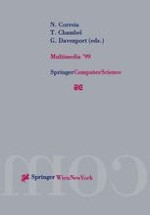2000 | Book
Multimedia ’99
Proceedings of the Eurographics Workshop in Milano, Italy, September 7–8, 1999
Editors: Dr. Nuno Correia, Dr. Teresa Chambel, Dr. Glorianna Davenport
Publisher: Springer Vienna
Book Series : Eurographics
Included in: Professional Book Archive
